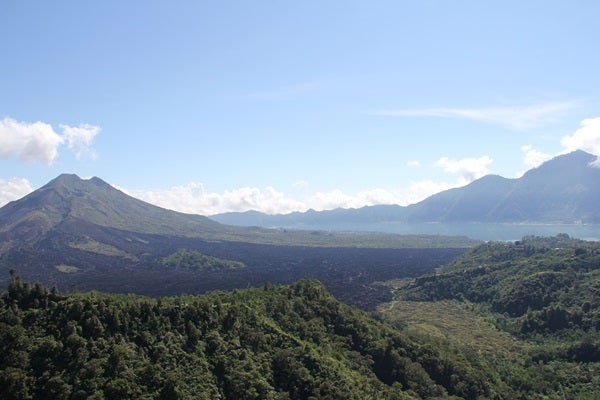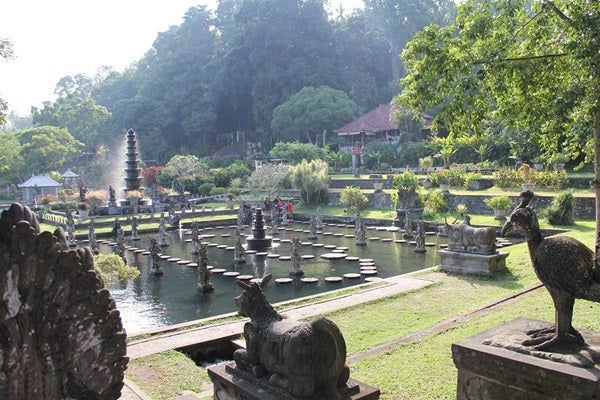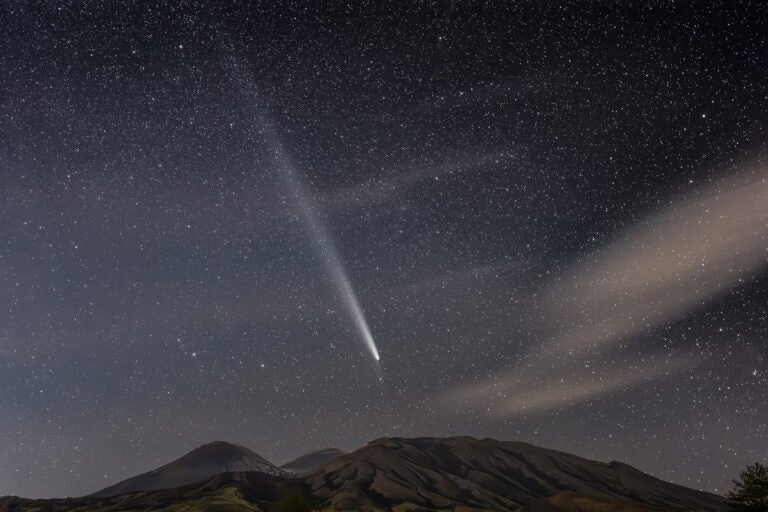On our final full day in Bali on Monday, March 7, our eclipse group explored the eastern end of this tropical Indonesian island. From our base in Ubud, we traveled north to Mount Batur, the island’s most active volcano. Solidified lava covers much of the volcano’s western flank, testament to the more than 20 eruptions the mountain has endured in the past 200 years. From a wider perspective, you can see that the mountain and neighboring Lake Batur sit inside a giant caldera, evidence that the volcano long ago blew off its top in an eruption rivaling that of its better-known Indonesian cousin, Krakatoa.
After the mountain, we visited Besakih Temple Complex on the flanks of Bali’s largest volcano, Mount Agung. (Unfortunately, the nearly 10,000-foot-high mountain was hidden in clouds.) We then visited the royal pools at Tirtagangga, built in 1947 by the island’s last king. The tranquil pools gave us a welcome respite before we headed back to our hotel.
Tomorrow, we head to Sulawesi for Wednesday’s total solar eclipse. We’re leaving Bali for two reasons. First, and most importantly, the path of totality doesn’t cross Bali. If we were to stay, we’d see at best an 83 percent partial eclipse. Second, Wednesday is the Balinese Hindu New Year, or Nyepi. In Bali this is a day of silence, when people remain indoors, don’t use electricity, and meditate. Even if the track of totality crossed Bali, it would not be a time for raucous eclipse celebrations.
Astronomy magazine’s travel partner, TravelQuest, has found us a viewing site on the center line in Sulawesi that should offer us nearly 2 minutes and 45 seconds of totality — if the weather is clear. And conditions look pretty favorable at this moment. Here’s hoping for clear skies.











